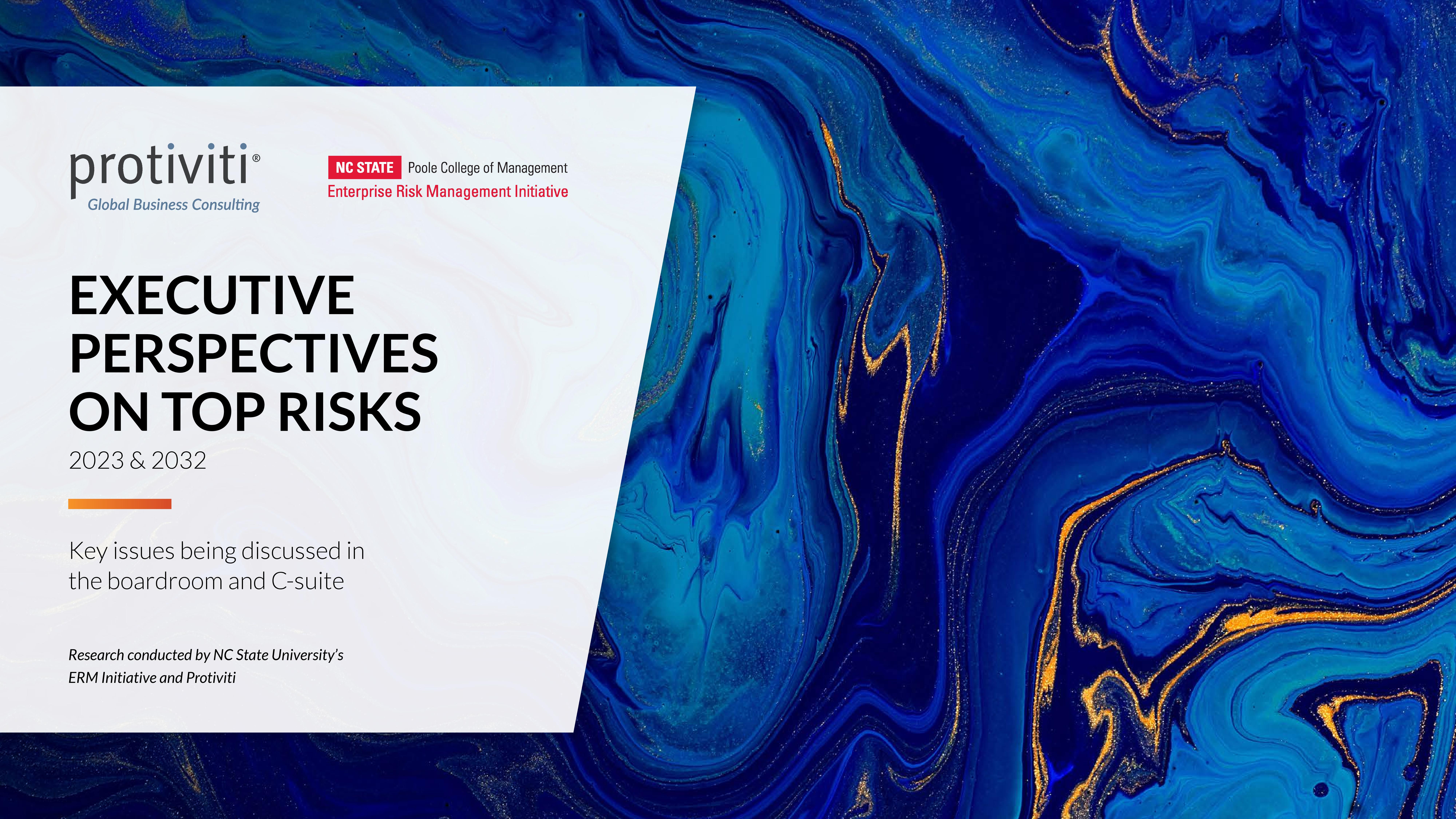Executive Perspectives on Top Risks in 2023 and 2032

Risk Forecast: Executive Insights on Future Challenges
The need for robust, strategic approaches to anticipating and managing risks cannot be over-emphasized. Boards of directors and executive management teams who choose to manage risks on a reactive basis are likely to be left behind those who embrace the reality that risk and return are interconnected and recognize the benefits of proactively managing risks through a strategic lens. Those leaders who understand how insights about emerging risks can be used to navigate the world of uncertainty nimbly increase their organization’s ability to pivot when the unexpected occurs. That can translate into sustainable competitive advantage.
To help executives and boards better identify potential risks on the horizon, Protiviti and NC State University’s ERM Initiative are pleased to provide this report focusing on the top risks currently on the minds of boards of directors and senior executives around the globe. This report contains results from our 11th annual worldwide risk survey of directors and executives to obtain their views on the extent to which a broad collection of risks is likely to affect their organizations over the next year — 2023. In addition to insights about near-term risks in 2023, we also asked respondents to consider how these risks will affect their organizations a decade from now (in 2032).
Major findings include:
- Global marketplace risks are the highest in more than a decade. Risks across the board have elevated this year in our survey. For 2023, all but three risks were ranked higher this year versus last year. For 2032, only a single risk was deemed to be a lower threat a decade from now, relative to concerns reported in last year’s report.
- Shifts in risks in the short-term versus long-term demand balancing near- and long-term priorities. There are noticeable differences in the top risks lists for 2023 and 2032. Merely focusing on near-term risks will inadequately prepare executives and boards for risks emerging a decade out, given that five of the top 10 risks in 2032 did not make the top 10 list for 2023. Waiting to recognize and plan for longer-horizon risks may put an organization in catch-up mode, if it’s not too late already to react. Amid the opportunities and challenges is the need for leaders to examine closely their organization’s readiness and resilience in the face of inevitable disruptive change and unwanted surprises. An ability to adjust and pivot could become the key differentiator between winners and losers.
- The 10-year outlook presages disruptive times ahead. Risks on the horizon for 2032 indicate an overarching intersection of disruptive innovation, advancing technologies and talent challenges. Executives indicate concerns about emerging innovations and their organization’s ability to attract, afford and retain the skills needed to embrace inevitable change — particularly changes to technology infrastructures to compete with “born digital” organizations and to leverage advanced data analytics to garner market insights needed to be competitive. These risks sustain the ongoing narrative that the 2020s is indeed a decade of disruption.
- Resistance to change has become a formidable obstacle to success. Concerns with resistance to change represent the fourth-rated risk overall for both 2023 and 2032, compared to seventh and eighth for 2022 and 2031, respectively, in last year’s survey. In the face of the disruption that lies ahead, survey participants are concerned about their organizations’ agility to pivot in response to change — an incongruence that can lead to strategic failure. In this era of rapid change, this risk points to a need for trust, transparency and effective strategic communications.